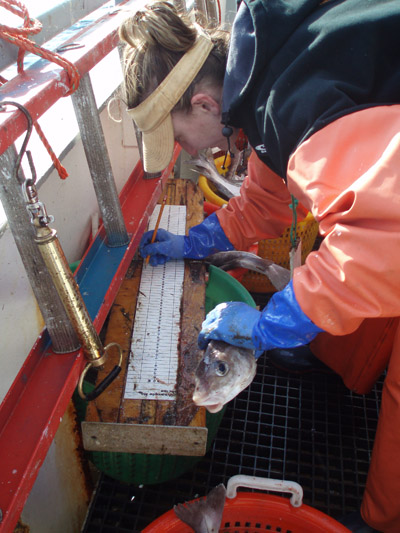Fisheries Observer Program Goes High-Tech
 Commercial fishermen are familiar with the Fisheries Observer Program. Launched in 1972 by NOAA, there are between 450 and 1000 observers working on commercial fishing vessels alongside fishermen collecting data at any given time. They are trained scientists (often marine biologists) who collect information that is used to estimate stock levels, protect endangered species, and manage fisheries. Data obtained includes:
Commercial fishermen are familiar with the Fisheries Observer Program. Launched in 1972 by NOAA, there are between 450 and 1000 observers working on commercial fishing vessels alongside fishermen collecting data at any given time. They are trained scientists (often marine biologists) who collect information that is used to estimate stock levels, protect endangered species, and manage fisheries. Data obtained includes:
• estimates of catch and discards
• biological sampling of the catch
• estimates of incidental takes of protected species
• monitoring of conservation gear
• monitoring of experimental fisheries
• economic information regarding revenue and expenses
Before 2013, onboard observers were required on fishing vessels 59 feet or longer. That rule changed in 2013 to include boats 40 feet or longer, such as halibut vessels. However, accommodating even one extra person on these smaller vessels can be a burden for commercial fishermen where living and working conditions are already cramped. There is also an economic burden on smaller vessels who pay for the observer’s services. Enter high-tech and electronic monitoring systems.
In a pilot program, electronic monitoring systems have been developed and installed on approximately 90 vessels using equipment purchased and monitored with funding from the National Fish and Wildlife Foundation. Over time, the devices have become more sophisticated, and can now track and identify more than 95 percent of species required for fishery management. While fewer observers will be deployed at sea, the program will continue to employ highly trained observers and scientists to review all data collected electronically.
Bill Tweit, Special Assistant to the Director at the Washington Department of Fish and Wildlife, currently chairs the Council’s Observer Advisory Committee as well as the Electronic Monitoring Working Group. He has a strong interest in developing electronic monitoring technologies to improve the ability to monitor fisheries, improve data collection, and improve sustainability to the ecosystem. More information about the program can be found at NOAA.
The public has until May 22nd, 2017 to comment on the EM program to federal policy makers. The program appears to be a cost-effective way of moving into the future. As with any new technology, there must be a balance between results, feasibility, and cost. While it will not entirely replace onboard observers, it is a great example of how technology can be applied to a traditional industry.
 Maritime Injury Law Blog
Maritime Injury Law Blog

